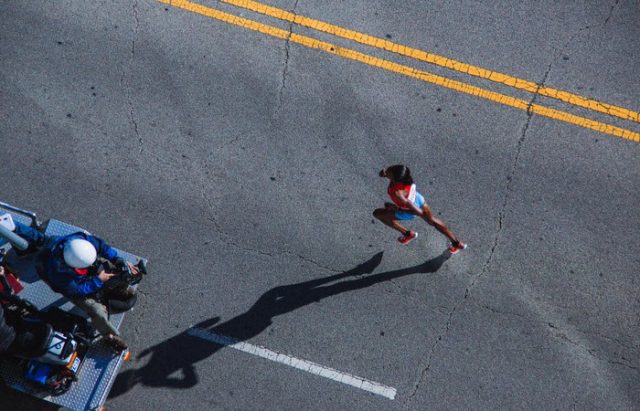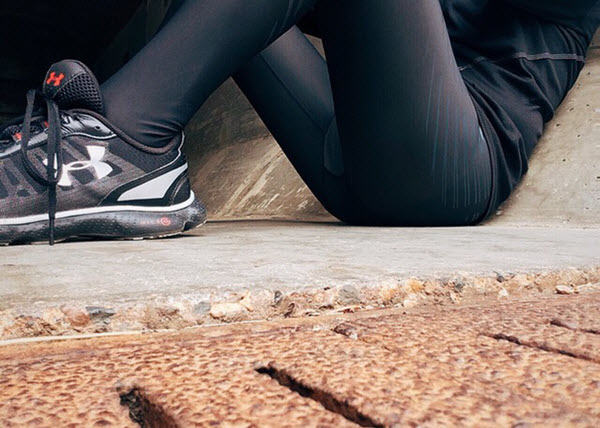How To Train for a Marathon

So, you want to run a marathon. You want to feel the rush of adrenaline. You want to experience the feeling of great accomplishment and satisfaction in crossing the finishing line. But, how are you going to run 26.2 miles when you get winded running for the bus?
The truth is that anyone can complete a marathon if he or she trains properly. He only needs to have the desire, time and the right tips on how to train for a marathon.
“Anyone that takes the time to prepare for a marathon can do it,” says Shelly Glover, coauthor of The Competitive Runner’s Handbook. “You can run a marathon without training properly, but you won’t enjoy the experience.”
Getting Started
If you have never run before or you run very infrequently, Glover advises that you start running regularly for about a year. You can build it up to 15 miles a week. Other experts, like David Whitsett, author of The Non-Runner’s Marathon Trainer, suggest that beginners should have, at least, five months to train.
That includes one or more months of doing three-mile runs several times a week and then four months to train in earnest.
For people who run regularly, most training programs last three to five months, depending on the runner’s strength and ability. The more time you give yourself to train, the better experience and the less risk of injury you’ll have.
Plus, the more time you spend training, the more confidence you’ll have when you run the race. Physical ability is important, but your mental outlook is even more so.
Most importantly, you need to be in good physical shape before training. If your strength, flexibility or overall health is weak, you’ll need to work on that. You can consider weight training, yoga or a visit to your general health-care practitioner beforehand.
The Training

“The journey to the marathon is as important as completing it,” says Glover. “The people you meet, the friendships you make, your self-growth, the level of discipline and organization you need – it all helps you believe in yourself.”
Weekly training schedules for beginners generally begin with four to six runs per week that total 15 to 20 miles. For the succeeding weeks, you need to increase your mileage by 5 to 10%, up to 40 miles a week.
The weekly long run is the most important aspect of the training. First-time and casual marathoners should gradually increase the length of their weekly long runs. They need to complete at least three runs of 18 to 20 miles prior to the marathon.
Your last long run should be completed two weeks before the marathon, leaving the last week or two to recover from your training. This will enable you to peak on marathon day.
Charity Curley, 32, describes herself as “sort of a runner” before she made the decision to run in the New York City Marathon. Running a marathon has always been on her life’s to-do list. However, it wasn’t until she accidentally stumbled upon some New York City Marathon stragglers one night that she decided to go for it.
“I was standing on the curb, unaware that it was the day of the marathon, and I saw people cheering for a group of very tired-looking walkers and slow runners,” Curley says. “These were people who were really committed to finishing, even if it took them seven hours to do so. It was very inspiring to me.”
She entered the lottery for the New York City Marathon in 1999 but didn’t get in until 2001. During those two years, she became a runner, building up to regular seven-mile runs. She followed one of the six 18-week training programs offered from New York Road Runners, which targeted both first-timers and advanced marathoners.
“It was like a recipe,” Curley says of the weekly running schedule. “I picked the one that looked like it fit me the most and followed it to a tee.” She also found the lectures offered by the NYRR to be valuable in helping her complete the marathon in just less than four hours, a time she was very pleased with.
Cross Training
Glover is not a big fan of cross-training. She believes that the most important thing to do to train for a marathon is run.
However, she does admit that strength and flexibility are important factors in conditioning. She also believes that yoga and weight training are helpful in preventing injury. Other marathon coaches do recommend cross-training to help build strength and stamina.
According to the New York City Marathon Website training guide, you can replace up to 25 percent of your mileage with other activities. This includes biking, swimming or other aerobic non-weight-bearing exercise. But, you must do these non-running activities at a pace that will help you achieve the same mileage and
See Also: How Runners Can Easily Improve Their Foot Strength
Shoes and Clothing

Knowing how to train for a marathon is only a part of the preparation. You also need to invest in the right gear.
Your running shoes, not surprisingly, are the most important pieces of equipment you’ll need. Do not skimp on them and do not run in old tennis shoes.
Good shoes will not only make you more comfortable when you run, but they’ll protect you from injury, too. Most runners’ stores have knowledgeable salespeople who can help you find the proper shoe for your foot and stride.
Keep in mind that not all running shoes can fit everyone. The shape and arch of your foot will dictate the type of shoe you should purchase.
You should replace your sneakers after every 500 miles of running. During your training, you should consider getting two pairs of shoes so that you don’t wear them out before the race.
You don’t want to get new shoes just before the marathon as you need to break them in. Glover suggests making sure you’ve run about 100 miles in them, including one long run.
Women also need to invest in a good jog bra that fits well. Glover warns women runners that their breast size might change during training due to weight loss or muscle gain. Make sure you buy a new bra if your straps are leaving marks or you notice the bra moving too much while you’re training.
Because your training can’t be put on hold due to inclement weather, it’s also a good idea to treat yourself with an all-weather gear. A wicking base layer to protect against the cold and a waterproof breathable shell for the inevitable rainy day are great investments for runners.



